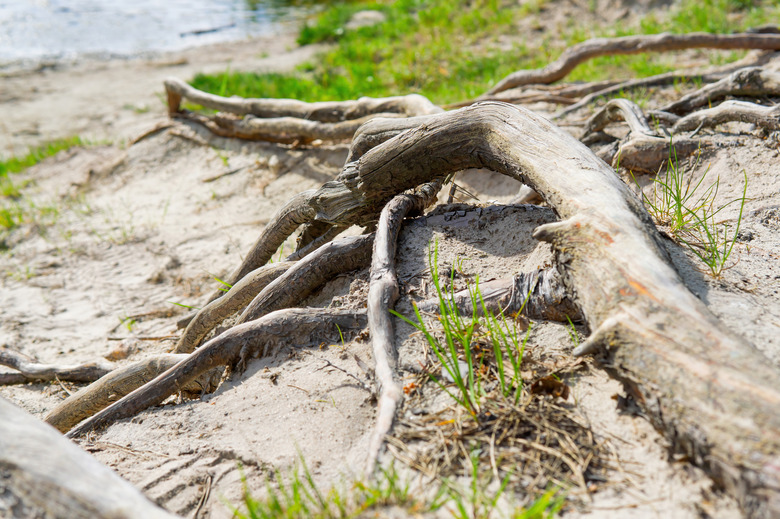How To Use Copper Sulfate To Kill Tree Roots
We may receive a commission on purchases made from links.
Copper sulfate, also known as bluestone, is an inexpensive herbicide and algaecide with a variety of applications. Purchased in the form of small white or dyed blue crystals, this commonly found product can be used to clear potentially harmful algae out of ponds, lakes, and pools. But it is more often used to clear sewer lines of invasive tree roots, which can burst pipes and lead to costly repairs if left untreated. Copper sulfate is an effective root destroyer, and it's easy to apply to a sewer line. But out of consideration for the environment, it cannot be used in every situation.
1. Check Local Regulations
1. Check Local Regulations
Because copper sulfate can be toxic to people and animals, and its buildup in aquatic environments can harm both plant and fish populations, the use of the root destroyer is banned in certain areas. As a result, before using copper sulfate as root killer, you'll need to check with local and state ordinances to see whether the treatment is legal or not.
2. Inspect Your Sewer Line
2. Inspect Your Sewer Line
You will need to determine if your sewer line has an issue that copper sulfate can fix: To check the state of the line, it's advisable to get a camera treatment done on your pipes, either by a licensed plumber or through your local government's office, which will sometimes do this for free.
It should be noted that copper sulfate cannot solve major root infestations: If tree roots have greatly invaded your sewer line, it's likely that attempting a copper sulfide treatment will only poison the environment, and you'll still need to pursue other means of clearing — or in that situation, more likely replacing — the pipes.
3. Flush Copper Sulfate Crystals Down the Drain
3. Flush Copper Sulfate Crystals Down the Drain
If after inspection you've found that there is a manageable blockage of roots in the sewer line, copper sulfate can be used to treat the problem (once again, if the compound is legal to use in your area). To do so, pour half a cup of copper sulfate crystals into your toilet — but not your sink or shower, as the crystals will erode the pipes and cause leaks — and flush it down the drain.
4. Let it Sit and Repeat
4. Let it Sit and Repeat
After 10 minutes, repeat the process once, then two to three more times without adding crystals to flush the copper sulfate down to the problem area. Once done, turn on any fans and open any windows present in the bathroom and rooms immediately connected to it, then leave your home for a few hours to avoid breathing in irritating fumes.
Warning
Copper sulfite fumes are only irritating to humans, but they can be incredibly toxic to dogs, cats, and other animals. Remove pets from the home when using copper sulfate.
5. Test the Sewer Line
5. Test the Sewer Line
Upon returning home, test the sewer line by flushing your toilet. If the single treatment worked perfectly, excellent. If it didn't, don't fret: It may take a few days for the dead roots to break off and clear the blockage.
6. Repeat Line Treatments As Needed
6. Repeat Line Treatments As Needed
If after a week your copper sulfate root treatment has failed to clear the line blockage, repeat the treatment process once a day for a week. This should ensure any roots present in the line are killed and on their way out of your pipes. You may then flush half a cup of crystals once every six months to a year, as needed, to ensure that new roots do not invade the sewer line.
References
- University of Florida Extension: Use of Copper in Freshwater Aquaculture and Farm Ponds
- Lowes For Pros: How to Deal With Tree Roots in Septic Tanks
- Balkan Plumbing: Tree Roots In Sewer Lines And How To Avoid A Sewer Repair
- RotoRooter: How Can I Kill Tree Roots in My Sewer Line Without Harming the Environment?
- NPIC: Copper Sulfate
- Cornell Extoxnet: Copper Sulfate
